LESSER-KNOWN ASPECTS OF MĀORI CULTURE: UNVEILING HIDDEN ‘’TRADITIONS AND PRACTICES’’

1. Māori Astronomy – Matariki
Māori have a deep connection with the stars, and one of the most significant constellations in their culture is Matariki, known internationally as the Pleiades cluster. Matariki signals the Māori New Year, and its reappearance in the winter sky signifies a time of renewal, reflection, and celebration. Traditionally, it was also a time for planting new crops.
2. Kaitiakitanga – Guardianship of Nature
Kaitiakitanga is a fundamental concept in Māori culture, referring to the responsibility to care for the natural environment. This extends to the land, water, and wildlife, where Māori see themselves as the stewards or guardians (kaitiaki). This idea is deeply woven into their belief system, influencing everything from fishing practices to the sustainable harvesting of natural resources.
3. Waka Ama – The Art of Canoe Racing
Waka ama, or outrigger canoe racing, is a traditional Māori sport that has experienced a resurgence in recent years. Māori were master navigators, and their ancestors used waka (canoes) to traverse vast distances across the Pacific. Waka ama reflects this heritage, and the sport is still widely practiced, combining physical endurance with cultural pride.
4. Ta Moko – More Than Just a Tattoo
Ta Moko, the traditional Māori tattoo, is more than just body art. Each design is unique to the wearer and tells the story of their genealogy, achievements, and social standing. Historically, Ta Moko was a rite of passage and carried deep spiritual significance. Unlike modern tattoos, traditional Ta Moko was chiseled into the skin using tools called uhi.
5. Māori Language – A Living Treasure
Te Reo Māori, the Māori language, was once at risk of being lost. However, due to revitalization efforts since the 1970s, Te Reo is now a vibrant and growing language. Initiatives such as Māori Language Week (Te Wiki o Te Reo Māori) and the introduction of Te Reo into schools have ensured that the language remains an essential part of modern Māori identity.
6. The Marae – A Living Center of Culture
A marae is not just a meeting place for Māori communities—it is a symbol of unity and identity. Marae are often seen as living entities, with the buildings representing ancestors and the surrounding land as sacred. Each marae is unique and serves as the center for social, cultural, and spiritual gatherings, including ceremonies like pōwhiri (welcoming), weddings, and funerals.
7. Māori Oral Tradition – Whakapapa and Legends
Māori culture is rich with oral traditions, one of the most important being whakapapa, or genealogy. Whakapapa is the framework of Māori identity, connecting people with their ancestors, land, and the universe. Through oral storytelling, myths and legends such as Māui (the demigod who fished up the North Island) are passed down, reinforcing values and lessons for future generations.
8. Rongoā Māori – Traditional Healing Practices
Rongoā Māori refers to the traditional healing system that Māori have used for centuries. It incorporates plant-based medicine, spiritual healing, and physical therapies such as mirimiri (massage) and karakia (prayers). Māori healers, or tohunga, have an intricate knowledge of native plants and their medicinal properties.
9. Haka – More Than a War Dance
While the haka is internationally recognized as a war dance, especially after being popularized by the All Blacks rugby team, it is much more than that. There are different types of haka for various occasions—some are performed to welcome guests, while others are used for celebrations or to honor someone. Each haka tells a unique story and serves as a powerful expression of Māori identity.
10. Māori Weaponry – The Art of Craftsmanship
Māori warriors were known for their skill in crafting weapons, each with symbolic and practical significance. Taiaha (wooden fighting staff), patu (club), and mere (jade or greenstone short club) are among the most iconic weapons. These weapons were not only tools of war but also treasured heirlooms passed down through generations. The craftsmanship behind these weapons reflects the precision and artistry of Māori artisans.
